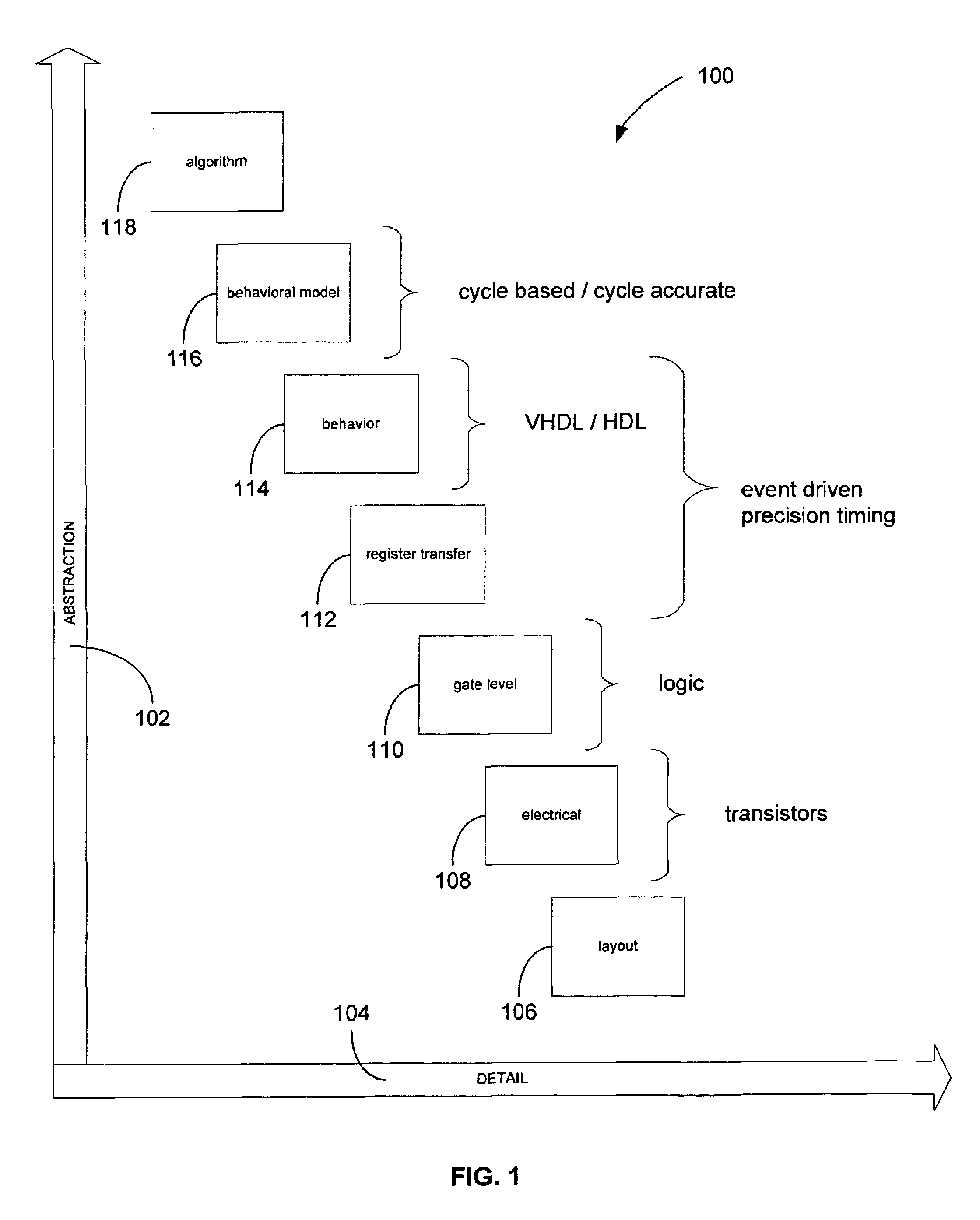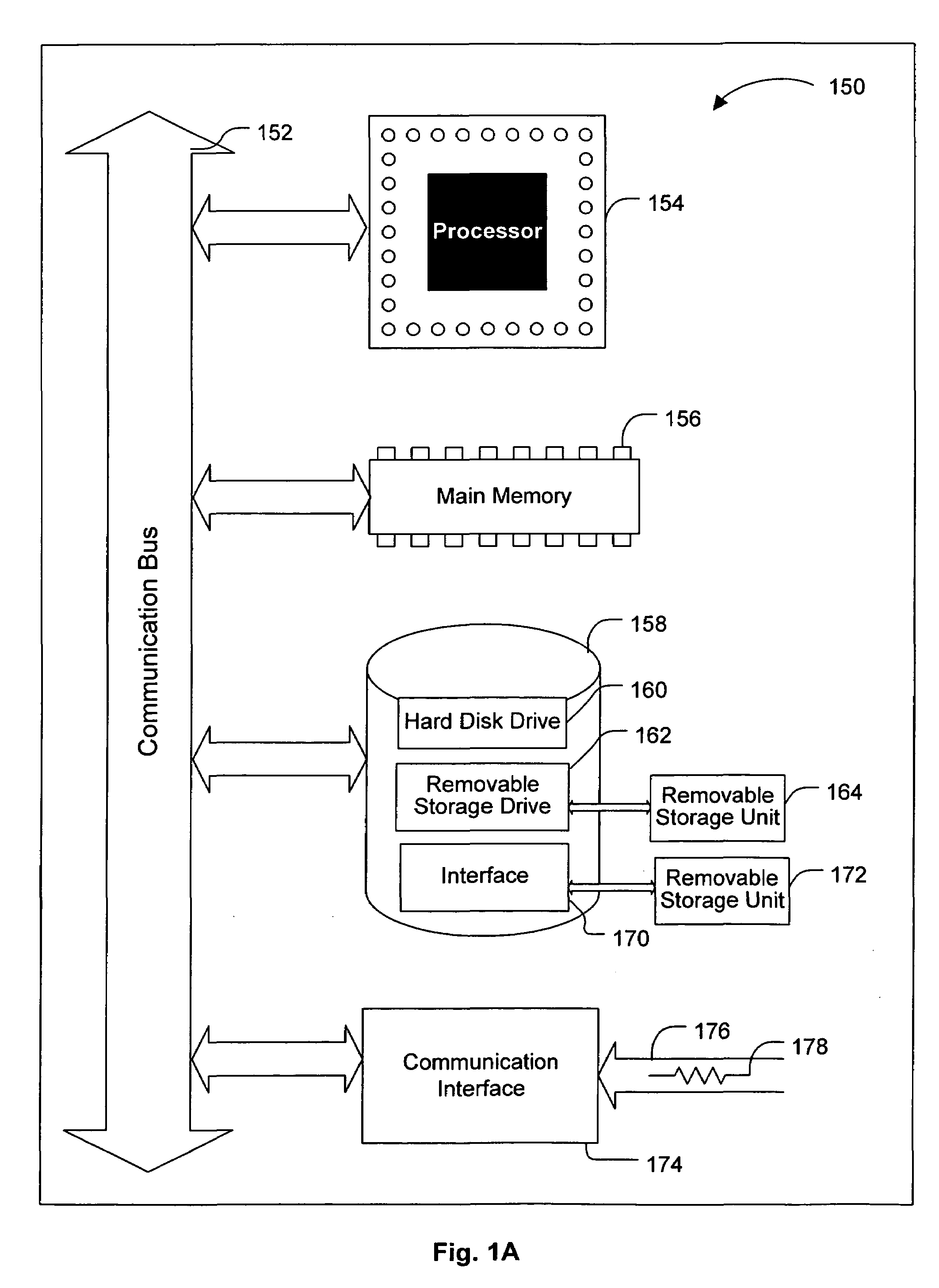Method and apparatus for unified simulation
- Summary
- Abstract
- Description
- Claims
- Application Information
AI Technical Summary
Benefits of technology
Problems solved by technology
Method used
Image
Examples
Embodiment Construction
[0038]The present invention is directed toward a method for simulating hardware and software components of a digital system design in a unified simulation environment. After reading this description it will become apparent to one of ordinary skill in the art how to implement the invention in alternative embodiments and alternative applications. As such, this detailed description of various alternative embodiments should not be construed to limit the scope or breadth of the present invention.
I. Introduction
[0039]The increasing complexity of the current generation of system designs requires high speed system validation models. A system validation model may be a physical prototype, such as a system emulation board. A system validation model may also be a system simulation model created with the aid of computer software. A system simulation model that mimics the design of a particular system is known as a virtual prototype. A virtual prototype can model, for example, an SOC system with ...
PUM
 Login to View More
Login to View More Abstract
Description
Claims
Application Information
 Login to View More
Login to View More - R&D
- Intellectual Property
- Life Sciences
- Materials
- Tech Scout
- Unparalleled Data Quality
- Higher Quality Content
- 60% Fewer Hallucinations
Browse by: Latest US Patents, China's latest patents, Technical Efficacy Thesaurus, Application Domain, Technology Topic, Popular Technical Reports.
© 2025 PatSnap. All rights reserved.Legal|Privacy policy|Modern Slavery Act Transparency Statement|Sitemap|About US| Contact US: help@patsnap.com



